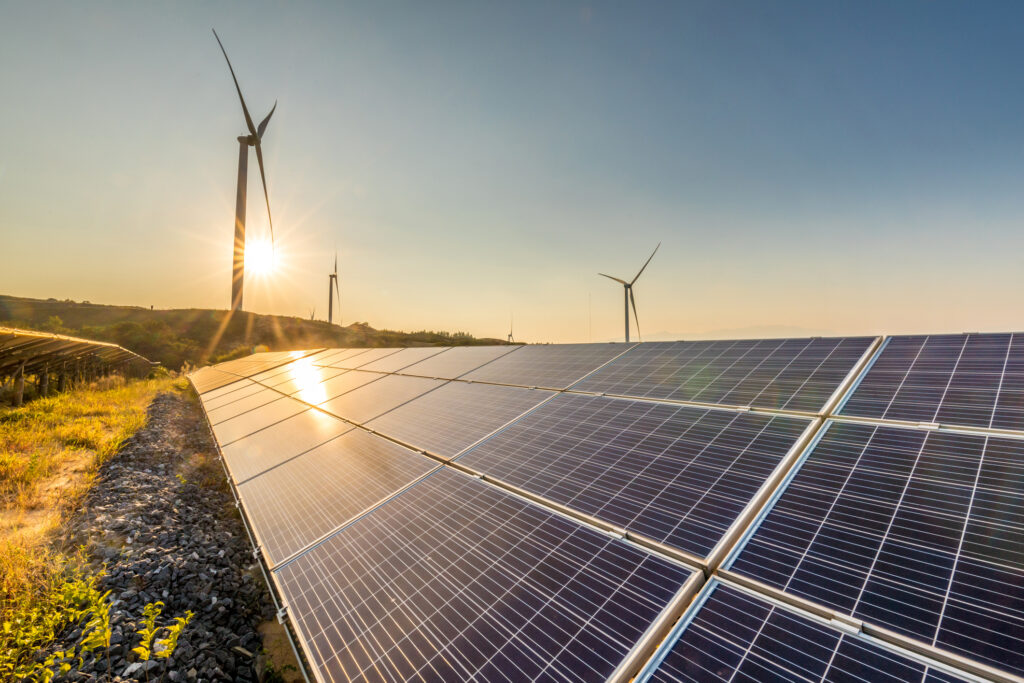
A new issue brief makes the case that America must reshore its renewable energy sector using domestic content standards.
The Center for American Progress (CAP) delivered a powerful argument this week in favor of using domestic content credits to ensure that renewable energy production technology is sourced from the United States.
Considering America’s climate goals and national and economic security interests, the issue brief unveiled by CAP this week makes it clear that the only way to ensure a greener future is for it to be Made in America.
“The next decade presents a critical window for American industry to support a massive expansion in US renewable infrastructure,” the report states. “The supply chain relationships that develop during the coming renewables boom will likely define the industry for the foreseeable future. If US manufacturers of solar panels, wind turbines, and utility-scale batteries — as well as the inputs used in the production of these technologies, such as aluminum — are not able to secure a favored, or at least competitive, place in those supply chains, their commercial outlook will be substantially impaired.”
To rephrase that in simpler terms: we have an opportunity right now to make sure that the production of renewable energy happens here in the United States. That means American manufacturers must lead the way in making batteries, wind turbines and solar panels, along with the steel and aluminum required to build them.
But if we don’t act to encourage that production, those industries will spring up elsewhere. Foreign renewable companies will out-compete American ones, costing our country hundreds of thousands of jobs and lost tax revenue while crushing manufacturing communities that stand ready and willing to build America’s clean energy future.
“More than a decade of focused industrial policy vaulted Chinese solar manufacturing into a position of global dominance,” CAP notes. “If the United States hopes to compete in this and other renewable sectors globally, it will need to show a similar focus and commitment to supporting industry during critical growth periods.”
It’s a dire scenario, but it’s also a hopeful opportunity. We can, and must, build the renewable energy future in America.
The report outlines three reasons why:
First, support for domestic manufacturing will create good jobs and contribute to a revitalized middle class. CAP notes that manufacturing “supports local communities and often provides quality, middle-class livelihoods for working people,” something that is guaranteed to benefit the economy should we ensure the creation of more of those jobs.
Second, incentivizing domestic production of renewables will help the United States meet its climate and justice goals, because foreign countries who would produce these technologies if not the U.S. are highly likely to have a worse environmental or human rights record in their manufacturing sectors. As the report states, “sourcing critical minerals from countries with poor human rights and environmental records is effectively…[placing] profits over the human impacts.”
Finally, domestically sourced supply chains are critical to ensuring national and economic security. By ensuring that the US is able to be energy independent through renewables, and guaranteeing Americans’ steady access to the technology needed to produce energy, America can be secure from any enemy seeking to restrict its supply of energy.
Given these arguments, there is a simple solution: produce more renewable technologies in America. But how should we go about doing that? CAP offers up some ideas, including offering tax incentives to encourage purchases of American-made products.
“The Clean Energy for America Act… represents a new approach to domestic content requirements,” CAP notes, discussing a proposed piece of legislation. “Under the act, investments in renewable energy facilities [producing zero greenhouse gas emissions] will receive a 30 percent tax credit relative to the value of the investment.”
On top of that, companies making these investments also would receive a domestic content credit if the facility is composed of domestically made steel or iron and/or manufactured products, defined as being at least 55% of the total components having been made of domestically produced items.
This domestic content tax credit is novel, and works to onshore supply chains by incentivizing private actors. Incentivizing the private sector to make renewables in America will likely be effective at bolstering production. After all, consumer demand is increasing, and the government can only purchase so much (although we’ll argue that Buy America preferences to ensure taxpayer money is spent on American-made products remains critical). These tax credits will ensure that businesses have a reason to make their goods here because there will be a market for them.
Overall, this report presents a convincing argument as to why we need to seize our renewable future and make it in America. Now it’s up to policymakers to heed its call.
As report coauthor Trevor Sutton put it: “The next decade will be a critical window for American industry to support a massive expansion in U.S. renewable infrastructure—one we’re not likely to see again.”
